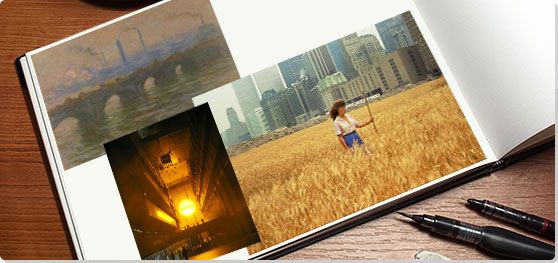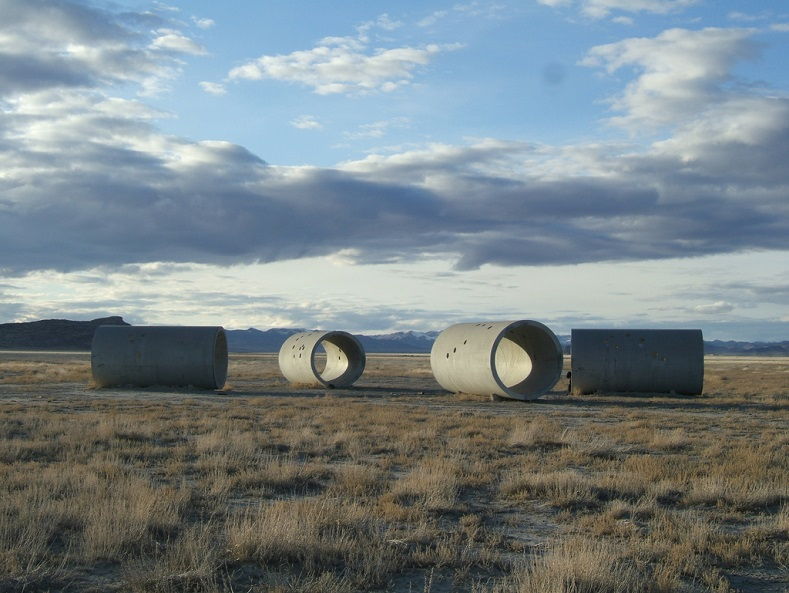Summary of Environmental Art
Since primitive man first illustrated streaks of rain and lightning on the interior walls of their cave homes, artists have been entranced with depicting our natural environment. Yet, for centuries, the landscape's appearance in art was meant to construe either awe for our natural world, or as a background subject for the documentation of human narratives. In the 20th century, alongside rising global concerns surrounding the state of the environment's health, and our impact as humans upon it, many artists started creating works in collaboration with the physical world to draw attention to ecological issues as well our relationship and contribution to them. As a more defined concept, Environmental art has gained more traction since the 1990s when artists began to think about their surroundings not just in terms of lived or built space, but as a cohesive system in which humans have a central part to play.
Key Ideas & Accomplishments
- Environmental artists seek to investigate our human relationship with the environment through embedding their artistic practice within it. This changes the way we think about the site of artistic production; as opposed to using the artist's studio as the sole location in which to create, Environmental artists engage the natural world in a much more active and immediate way either by working in new ways outside, or by bringing natural materials into new settings.
- Environmental artists aim to work in harmony with the natural environment rather than disrupt it. This means they deeply consider the impact that they as individuals have on nature and do not sacrifice its health or wellbeing in order to create work. Moreover, by working in collaboration with organic landscapes, Environmental artists fall subject to the uncontrollable cycles of the seasons with their processes of flowering, erosion, molding, and decay.
- Environmental artists often use natural materials such as leaves, flowers, branches, ice, soil, sand, stone, and water as the very basis of their artwork. Moreover, in choosing to situate their work in specific places, Environment art often seeks to both transform the way that the site is viewed, whilst also revealing what was already there. This demands that viewers and audiences rethink how they "see" the world around them and pay more direct attention to the minute and distinct parts that make up what we may overlook as a cohesive environment.
- Evolving from Land Art, Environmental art also rethinks the importance of the exhibition space and seeks other places where art can happen and where art can exist. This form of Institutional Critique seeks to question the authority and power of museums and galleries that have historically controlled the production, sale, and viewing of art works. By looking for new and sometimes unique and surprising locations, artists not only remove the power from high-powered art-dealers, buyers, and from the art-market in general, but also question the need for an audience (and art buyers) at all. Instead, artists emphasise the birth of the idea and the process of creation, without insisting that the work needs to be seen by many people, or indeed by anyone at all.
Artworks and Artists of Environmental Art
Ocean Landmark
Betty Beaumont's work is deeply socially conscious, often actively highlighting sustainability and engaging with contemporary issues. In creating this piece, Beaumont was looking for a way to take waste material from a power plant and transform it into something that would actively benefit the environment. She collaborated with a team of scientists in order to create the work that lies to this day in the Atlantic Ocean, 40 miles away from New York Harbor. By taking coal waste and reforming it into inert blocks, Beaumont was able to fashion what has become an artificial reef, deep under the sea. Though viewers are unable to view the piece because of its location, New York University's Interactive Telecommunications Program created a virtual reality experience of the sculpture in 2000. The installation is apparently a fish haven, as described by the National Oceanographic and Atmospheric Administration.
The work asks profound questions about the possibilities of Conceptual art to have a positive impact on the environment. In Beaumont's preparatory work with scientists and engineers in this piece, she showed how integrated her artistic practice is with environmental science as well as experimental ecology. By fusing art and art practice with science, she broke down the divide between the different disciplines and suggested new cross-discipline modes of working, particularly in the solving of pressing problems such as the repurposing and recycling of waste from industry. Moreover, in placing her work under the sea, she considered problems between a passive and active response in her viewers: how can we respond to this work as an aesthetic object or as an example of activism?
Inert coal waste
Pinfold Cones
Andy Goldsworthy is famed for his celebration of organic pattern, shape, and texture in his site-specific works that explore the inherent beauty of the environment, the inevitable cycles of rebirth and decay, and co-creation between man and natural material. He has commented that he sees his work as "collaboration with nature." In this example, we see this union through his profound appreciation with what nature has to offer to anyone who takes the time to look closely.
For four years, Goldsworthy lived in Cumbria in North West England, and worked on creating these limestone shapes while employed in the area as a gardener. He carefully selected local limestone, and stacked the shards up into a cone shape, each one unique. He noted, "I am fascinated by the way a cone grows, stone upon stone, layer by layer - as a tree does, ring upon ring. By making slight changes in the placing of each stone, the shape can be brought out or taken in, made elegant or squat, full or empty." For each cone Goldsworthy created a singular shape, informed by the natural curves and points of the stones themselves.
The work was created in specific dialogue with the nearby "Nine Standards," which are nine cairns that have sat on a hill for several centuries, with origins that are unknown. Goldsworthy wanted his pieces to respond to these ancient structures, making a link between old and new. In mimicking the shape and material of the older cairns, Goldsworthy suggested that using natural materials to build is an ancient, inherent, human impulse. He demonstrated the longevity of stone through his creations, which indicate that, like the "Nine Standards" they, too, may last several hundred years. Although the work could not be bought or sold, it lent a special message toward viewers, that they too, could build their own versions of ancient artifacts and in fact, add to the idea of geographical heritage.
Limestone cones - Brough, Cumbria
Wheatfield, a Confrontation
Hungarian-American Agnes Denes is one of the best-known Environmental artists, producing work that pushes the boundaries of what art can be, crossing over into other disciplines such as activism. This piece is one of her most famous, and extremely ambitious works. With the help of several volunteers, Denes planted a two-acre wheat field in a landfill in Lower Manhattan. The ground was prepared with soil, planted with wheat, and then harvested. The piece survived for three months.
The location was of central importance to this work. At that moment in time, the site was totally barren and not yet developed as it is today (now it is home to the Battery Park City neighborhood), making it the perfect urban wasteland to revitalize. But there are also other significant details about the site, as writer Karrie Jacobs comments, "The work seemed to stare down the World Trade Center, one of New York's significant symbols of power, and force the viewer to confront difficult questions [...] on the divide between rich and poor, between the pastoral and the technocratic, and how people embrace progress." Though her attraction to sites of urban decay may recall Robert Smithson's work, the transitory nature of the work means that rather than making a permanent mark upon the land, Denes's work is only recalled in memory, in photography, or by word of mouth.
Wheat and soil on a landfill in Manhattan
Double Bed for Dreaming
Meg Webster often brings gardens, flowers, and plants into the gallery space. But these works are not merely replicating the English country garden or the feel of a flower show. Instead, through the use of lights, heat, and organic material, she actively changes the ambient temperature of the gallery with her recreations of ecosystems.
In this piece, we see the influence of Minimalism in its simple presentation of a rounded rectangle of peat moss and soil. The materials from which it is made are the very building blocks of our lives as they provide the basic starting points for plants, which feed us and other living things. Though this point may sound obvious, by shaping this natural material in such an understated way, Webster exposes the underlying, ever-present magic of the natural processes that unobtrusively take place perpetually all around us. Yet, by bringing it into the gallery setting, she was also able to emphasize its importance and invited viewers to consider something ordinarily ignored as something worthy of being art. Moreover, by using the soil, with its distinct smell and look, she reminded viewers that nature is not just something to be looked at, but is also a tactile presence.
Peat moss and soil
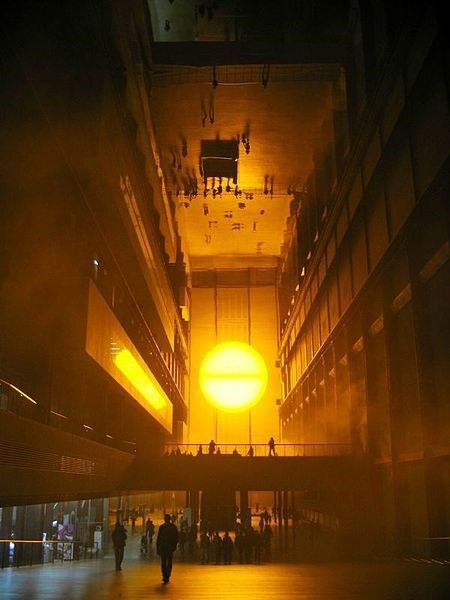
The Weather Project
Icelandic-Danish artist Olafur Eliasson has produced several works, which directly harness the power of the weather as a means of adding a new experiential element to the aesthetic encounter. Often using light and water, Eliasson is interested in dissolving the boundary between the inside and the outside through our body's reception to the key elements that make up life on earth. The Weather Project is made from hundreds of yellow lamps attached to the wall in a half sun formation. This half sun is then reflected by mirrored foil on the ceiling, making it appear as a full glowing orb. The huge room is then sprayed with mist so that viewers move through the space they become slightly damp, as if moving through the London fog. Eliasson used mono-frequency lamps, so that only black and yellow become visible, lending to an experience akin to walking through the shadows.
In recreating the weather inside, Eliasson highlighted the way we normally experience the weather as a mere background element in our lives. Though the weather may have an impact on our ability to enjoy certain activities, it is normally considered only in terms of its effects on us rather than on its own terms, as an equally alive entity. This becomes particularly noticeable when living in a city. In past agrarian economies, humans lived in harmony with the weather and relied on it to sustain their way of life. Now for those who live in cities, perhaps it is merely a nuisance. Eliasson wanted the work to engage with this issue, saying "Every city mediates its own weather. As inhabitants, we have grown accustomed to the weather as mediated by the city." By making the weather an event in this famous metropolitan museum, he tries to abstract it from its context, allowing us to appreciate its complexities and nuances in a new way.
Monofrequency lights, projection foil, haze machines, mirror foil, aluminium, and scaffolding
The Branches of Trees
Dutch natural scientist and artist herman de vries (who uses all lowercase letters in the spelling of his name) produced this work The Branches of Trees as part of his Catalogs of Nature series. Trained as a gardener and biologist, de vries brought his intimate knowledge of plants and nature to his work through collecting, cataloguing, and displaying a multiplicity of natural materials. For this piece, he meticulously collected and laid out different specimens of trees (and in other examples leaves and soil) in a formation reminiscent of Victorian taxonomic displays.
Unlike those Victorian pieces, however, which labeled each specimen with the genus and species as well as its common name, here the artist leaves the examples to stand for themselves. While the Victorians may have aimed to document and explain nature, human language is absent from de vries' work. In fact, in the collected objects, we do not know what trees we are looking at, and indeed, we could be looking at the branches of some of the same tree. In doing this, vries demanded that the audience look and study the brilliant detail and pattern of each example, and avoid attempting to categorize or label. De vries aimed to engender an appreciation of nature that went far beyond mere education, and into another way of seeing the world around us.
Tree branches on paper
Clemson Clay - Nest
German artist Nils Udo is one of the most prolific Environmental artists, having started out in the 1960s and still working to this day. This enormous bird nest was built by Udo in the botanical gardens of Clemson University. Built with the help of students and volunteers, the installation was made using bamboo for the interior of the nest and pine for the exterior. It used 80-tons of locally sourced pine logs. The piece stood for two years, before its logs were turned into mulch to fill in the hole.
Udo has built other nests such as his 1993 Bird's Nest, Eggs Formed in Ice, Coloured with Viburnum Fruit, made to scale with sticks and ice, or Winter Nest made entirely from sculpted snow. But for this gigantic nest, he drew attention to the labor and building skill that goes into a bird's nest. By harnessing the power of clay, normally a material used in building bricks for houses, he created a solid structure that suggested its own permanence. He juxtaposed this, however, with the use of untreated wood, which would invariably decay, mold, and change. The piece asked us to consider what we, as humans, emulate from nature, in our own world. Birds build with no regard to a guarantee of permanence in their homes. Even their residence is subject to the natural forces of climate and decay. We, on the other hand, favor building things for permanence. By paying attention to the birds' faith in the natural order of Mother Nature, whether it is constructive or destructive, we are encouraged to trust more in life's harmonious processes.
Bamboo, pine and clay
Midway: Message from the Gyre
Seattle photographer Chris Jordan's work is deeply engaged with the impact of mass consumption on the environment and nature. In this series of photographs, Jordan captured the immediate effects of plastic waste on the albatross population of Midway Atoll, a remote territory of the United States. In this photograph, Jordon has cut open the stomach of a dead albatross chick to expose the plastic rubbish that it has eaten, fed accidentally by its parents who have mistaken the trash, floating in the vastly polluted Pacific Ocean, for food.
The body of the albatross is still recognizable as we can see its beak, eyes, and feathers. But Jordan has laid out the pieces of toxic plastic in colorful juxtaposition to the mute colors of the baby bird offering a glimpse of the harmful effects of ignorance and negligence on innocence. The albatross carcass also exposes how insidious the climate crisis truly is, as he states, "Like the albatross, we first-world humans find ourselves lacking the ability to discern anymore what is nourishing from what is toxic to our lives and our spirits."
Albatross chick carcass, plastic
Beginnings of Environmental Art
Environmental art, also known as ecological art, encompasses several different forms and practices that engage with, and represent the environment. It is distinct in its less specific time period and greater scope of art. As Professor John E. Thornes noted, "Environmental art is [...] a new genre to describe works of art that are not only directly representational of the environment (the 19th century wonders such as John Constable's Cloud Series, Claude Monet's London Series, or Paul Cézanne's Mont Sainte Victoire Series), but also works of art that are clearly nonrepresentational and performative in terms of much less direct interpretation but more active engagement of the audience such as Richard Long's A Line Made by Walking or James Turrell's Skyspaces.
Landscape Painting
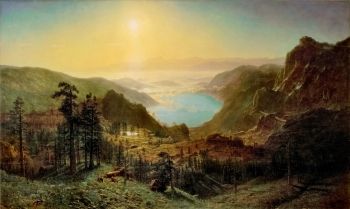
The natural world has always provided artists with inspiration, as both background matter and central focus, its beauty providing an ever-present sense of awe weaving through the centuries. The European High Renaissance artists often celebrated the harmony of the natural world in their compositions and sought to replicate its balance. Later, Naturalist painters such as John Constable contrasted images of houses and agricultural detail with realistic depictions of British landscape. Influenced by Constable, painters from the French Barbizon School strove to represent real life in and amongst nature: The Gleaners by Jean-François Millet is one of this school's most celebrated works in its portrayal of people working on the land. In the 19th century, Impressionists challenged the distinction between the focal point and the background of a painting with more informal compositions, so that paintings felt like snapshots of a moment rather than static images. Monet's plein air paintings notably captured his immediate surroundings: his famous Water Lilies series from the beginning of the 20th century is testament to this. In America, in the 19th century, the Hudson River School was central to the development of a particular aesthetic as painters like Thomas Cole explored how to represent the marvelous idiosyncrasies of the new continent.
However, in thinking about the traditional composition of landscape paintings, some critics and artists began to see that this form made nature too picturesque and too controlled: what we viewed in a landscape was not nature in and of itself but a version of nature as seen through the eyes of the painter. This created a landscape category all of its own, and it was only logical that artists would evolve their perception of the world from mere subject matter to an actual entity of which we would begin to contemplate our various relationships. As artists began to explore the presence of humanity in this regard, they began to consider our physical engagement with, and sometimes opposition to our natural world.
Rise of Conceptual Art
In the early 20th century, as many artists moved away from realism, they also moved away from depicting natural landscapes in the mode of prior eras. Instead of a subject matter on canvas, some artists began to produce more conceptual work that took place out in nature, or used nature as a key medium in their work. These projects emphasized location, materials, and process over preconceived ideas about a final piece. Artist Joseph Kosuth wrote Art after Philosophy in 1969 as a means of critiquing the dominance of modernism in the art world, and asking artists to rethink the possibility of what art could do and how an audience could respond. Artists such as Joseph Beuys and Sol LeWitt, produced complex and layered works that moved from the gallery space to new and innovative locations.
Earth Art
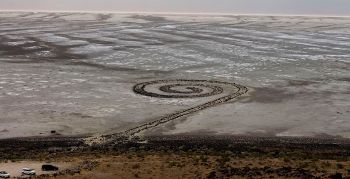
Land art or Earth Art was an important avant-garde art movement in the 1960s and 70s pioneered mainly by American artists. It developed through Minimalism, which championed a new simplicity as well as an increasing frustration with the control and hierarchy of the mainstream art market. It also had much in common with Conceptual Art in its prioritizing of process over execution. Many young artists at the time were bothered by the restrictions of the gallery space, and the counter-culture movement was encouraging individuals to rethink structures of power and how to successfully operate outside of them. Artists began to look for spaces in urban wastelands and deserts to host different kinds of work, some of surprising composition and size. Robert Smithson's Spiral Jetty (1970) is considered a central piece of Land Art; in his creation of an enormous spiral in a salt flat in Utah, Smithson invoked the grand scale and size of nature itself. Smithson, along with other artists such as Nancy Holt, Michael Heizer, and Walter De Maria created works using stone, rock, soil, and sand.
However, as English writer and painter Adrian Henri wrote, if "the major works of the new earth art are American ... Holland seems to be a natural home for environmental art." For Henri, Environmental art was a much more European affair. Its artists were not producing enormous works in the desert à la American Michael Heizer's Double Negative (1969-70), and were not necessarily responding to the critiques of American counterculture. Instead, Environmental art sought to more readily use and work in tandem with natural materials. In fact, Robert Smithson and others were critiqued for the environmental damage caused by their works: techniques like cutting chunks out of the earth, drilling, digging, and moving heavy duty materials such as stone did not adequately demonstrate a concern for the impact of humans on nature.
These critiques were born out of an emerging, worldwide environmental consciousness. Rachel Carson's 1962 book Silent Spring documented the impact of pesticides on the natural world. It predicted the impact on the use and accrual of harmful chemicals in animals and insects, and made suggestions for pesticide alternatives and pest-reducing strategies. The book had a huge impact on public consciousness about the influence of human beings in the natural world, and saw the formation of several environmental justice and campaign groups. In 1970 Richard Nixon's government established the Environmental Protection Agency as a means of addressing many of the concerns raised by Carson's text. That same year saw the creation of Earth Day, celebrated annually on the 22nd of April. The day was created in order to draw attention to the wide variety of environmental challenges facing the globe. The first Green Parties were also established around that same time in order to take concerns voiced by environmental justice groups and concerned individuals into mainstream politics. Since then, climate change and global warming have become increasingly central to the manifestos of other political parties, as scientists warn of the very serious impact environmental change will have on the day-to-day life of people around the globe.
Environmental Art: Concepts, Styles, and Trends
Representation
At the center of Environmental art is the complex question of how (and if) the environment and landscape can be represented in art. Professor John E. Thornes makes the distinction between art that seeks to replicate the world and art that replicates the experiences of being in the world. In identifying these differences Thornes exposes the problem inherent within the notion of "representation": is there only one way of experiencing our environment? Can we separate representation from experience? Much Environmental art wrestles with these issues: in the careful planning and making of Agnes Denes' work Tree Mountain - A Living Time Capsule (1982), what can we say is truly being "represented'? The piece, which is made up of 10,000 trees planted in a mathematically exact pattern, is meant to take 400 years to grow. In this ambitious plan, can we say that nature is being represented? It seems instead, that rather than questioning the ability of rendering something true to life, Environmental art seeks to transform the very basis on which we experience art, whether in terms of scale, time, or affect.
Natural Materials
Using natural materials and the processes of nature are very important to aspects of Environmental art. Artists often use things that will grow such as seeds, flowers, and algae; material that might decay like wood and leaves; and the very elements themselves that are subject to change like water and fire. In doing so, Environmental art draws attention to the natural processes that underpin every aspect of life, and remind viewers that we ourselves are privy to those same transitions. These works can sometimes only be displayed once or temporarily. This means that the artworks themselves become experiences, or indeed documentation of experience. Toshikatsu Endo, for example, often burns his pieces and then photographs the process, displaying the results afterwards. Peter Hutchinson's Particutin Volcano Project (1970) saw the artist place white bread on an active volcano in order to photograph the sped-up moldering process. British artist Andy Goldsworthy famously uses materials from his immediate environment in order to celebrate the aesthetics, variety, and beauty of the natural world. Natural materials harness an immediacy and proximity to our day-to-day lives that had not yet been seen in art.
Audience
Environmental art has a very interesting relationship with the notion of an audience, or even a single viewer, as artworks are often in specific, and sometimes hard to reach places. Artists often document the process rather than the finished product. This affects the ability of individuals to see a specific iteration of the work and causes them to rethink their expectations of the limits of an aesthetic experience. In considering the idea of an audience in their pieces, artists ask questions about fame and legacy: if art does not last forever, or more specifically, does not let the artist live on through their achievements, what other significance can it have?
Later Developments - After Environmental Art
In the 1990s and early 2000s, more and more Environmental artists started to consider the actual legacy and impact of art in the environment, and how their work could actively draw attention to specific issues occurring in otherwise unseen or unrecorded places. The term "ecovention" was coined by artist/curator Sue Spaid and curator Amy Lipton to define art that had a much more specific function than simply representing an idea, but that was an "intervention" of some kind to aid in the improvement of a particular issue. The two curated an exhibition at the Contemporary Arts Center in Cincinnati around this idea, featuring various examples of environmental work, and wrote an accompanying book, solidifying this term as a distinct aesthetic movement.
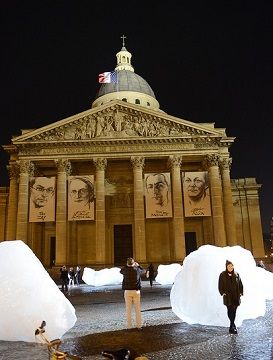
Environmental art has had a substantial impact on Installation and Public Art in the usage of material or inspiration drawn from nature and natural events. In recent years work by artists such as Olafur Eliasson and Ann Veronica Janssens have shown the direct influence of the fleeting experiences of Environmental art through the creation of fabricated natural experiences in the gallery space. Eliasson's work, The Weather Project (2003), for example, replicated the experience of an enormous setting sun within the Tate Modern's iconic Turbine Hall, bringing the sky inside. Art group Random International toured the world with their Rain Room (2012), in which the audience walked around and through a digital installation that simulated rain. Janssens's yellowbluepink (2015) played with the more sensual aspects of living amongst nature through a room filled with colored mists that transformed the attendee's spatial perception.
Useful Resources on Environmental Art
- Land and Environmental ArtOur PickBy Jeffrey Kastnor
- Art in the Anthropocene: Encounters Among Aesthetics, Politics, Environments and Epistemologies 2015By Heather Davis and Etienne Turpin
- Land Art in Great Britain: A Complete Guide To Landscape, Environmental, Earthworks, Nature, Sculpture and Installation Art in Great BritainBy William Malpas
- Decolonizing Nature: Contemporary Art and the Politics of EcologyOur PickBy T. J. Demos
 Ask The Art Story AI
Ask The Art Story AI